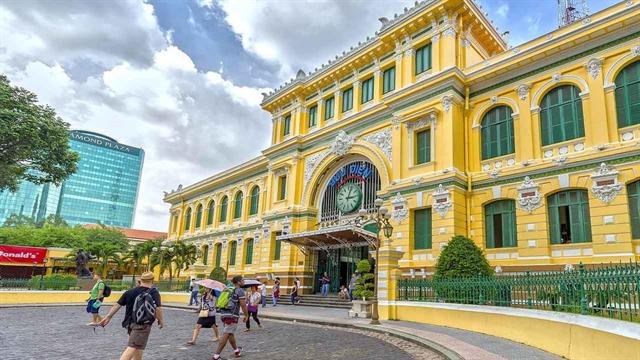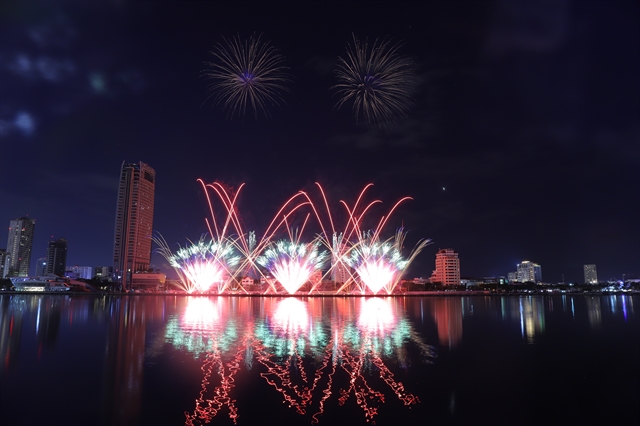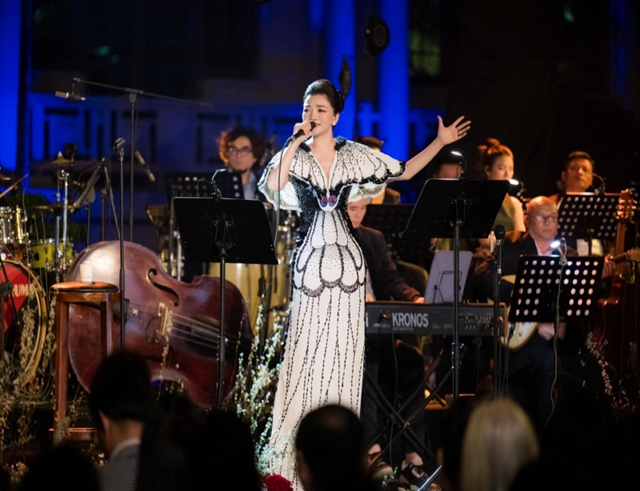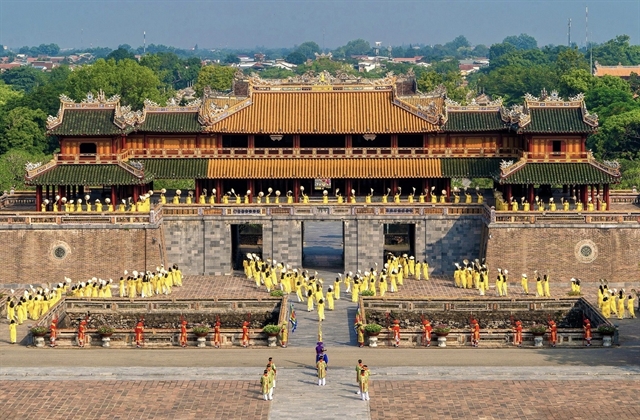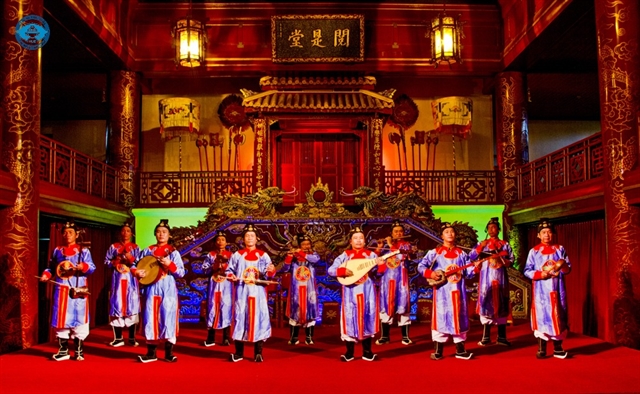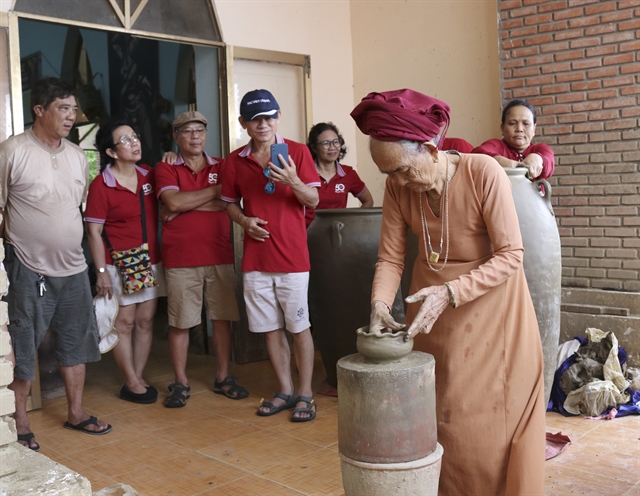
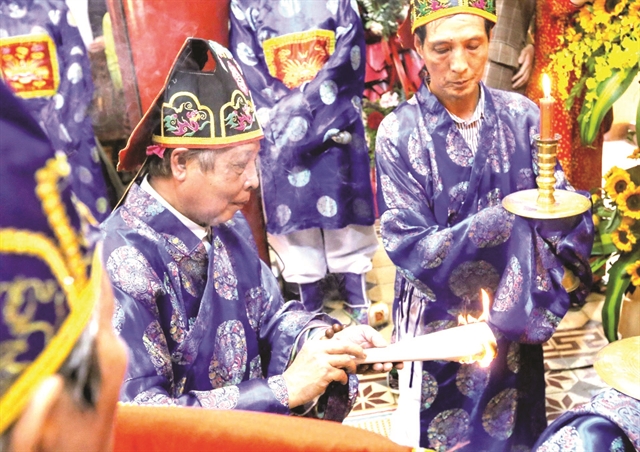
|
| This year's Láng Pagoda Festival has revived all traditional rituals. VNA/VNS Photo Tuấn Đức |
HÀ NỘI Many traditional festivals and rituals have been revived across Hà Nội, thanks to the role played by the community.
One example is the Láng Pagoda Festival, a traditional Spring Festival for people living by the Tô Lịch River held in the third month of the lunar calendar.
This year, for the first time in 70 years, all the folk rituals that made the Láng Pagoda Festival a unique event in the past have been restored.
Built in the 11th century, Láng pagoda has always been a famous pagoda in Hà Nội for its wide space, various antiques and Buddhist statues. The Spring festival at the pagoda is organised to show gratitude to King Lý Thần Tông (1116 - 1138) - the fifth king of the Lý Dynasty, and monk Từ Đạo Hạnh (1072-1116). It was a lively spring festival of the whole area that attracted people living on the sides of the Tô Lịch River nearby to attend. The festival involves ritual ceremonies and traditional games like swinging, wrestling, chess playing, tuồng (classical drama) and chèo (popular opera) performances, among others.
For a long time, not all of the old rituals during the festival were carried out. However, this year, the organising committee has determined to bring back all traditional rituals of the festival such as lễ tế (offering), độ hà (palanquin parade on the river) and đấu thần (fighting between gods). Every ritual has a unique meaning based on myths about Từ Đạo Hạnh.
Hà An Tuấn, vice chairman of Đống Đa District People’s Committee said the revival of traditional rituals at the Láng Pagoda Festival is of great significance, creating a distinctive feature of the city.

|
| A palanquin parade at the festival of the five Mọc Villages. VNA/VNS Photo Tuấn Đức |
The same situation is seen in many other festivals in Hà Nội, such as the festival of the five Mọc Villages, Đồng Cổ Temple Festival, Thập Tam Trại (Thirteen Villages) Festival and Tản Viên Sơn Thánh (Tản Viên Mountain Saint) festival. The revival of rituals is made possible thanks to the active engagement of local communities. Local residents enthusiastically take part in discussions on restoring the rituals and choose people to perform the ceremony.
Bùi Thị Hương Thủy, deputy head of the Heritage Management Office under the city’s Department of Culture and Sports, highly appreciated the role of the community in assisting the unit set up dossiers for national intangible cultural heritage and helping localities restore ancient rites.
She said many festivals and traditional rituals have been lost in the flow of time, causing regret among local communities. Therefore, when localities want to revive them, local residents are eager to join in the work.
As the national cultural centre, Hà Nội has put an emphasis on investment in cultural development. The city's Party Committee has issued a programme and a resolution on cultural development.
With 1,206 traditional festivals held throughout the year, particularly in Spring, Hà Nội considers them a great resource to attract tourists to the city. The capital city is among the localities with the richest cultural heritage in Việt Nam, with 1,793 intangible cultural heritage items, including three UNESCO-recognised Intangible Cultural Heritages of Humanity, one on the UNESCO list of Intangible Cultural Heritage in need of Urgent Safeguarding and one World Documentary Heritage. VNS


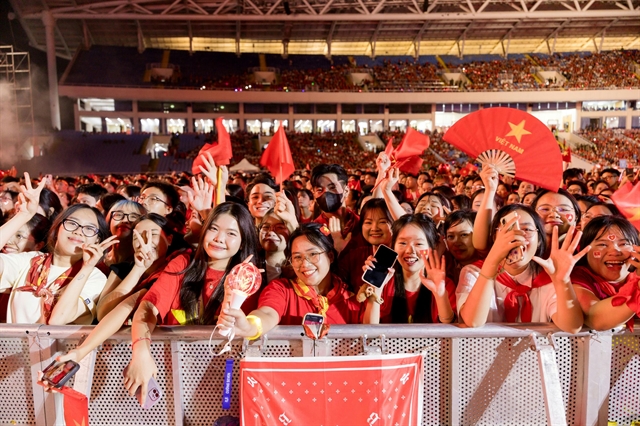
.jpg)


